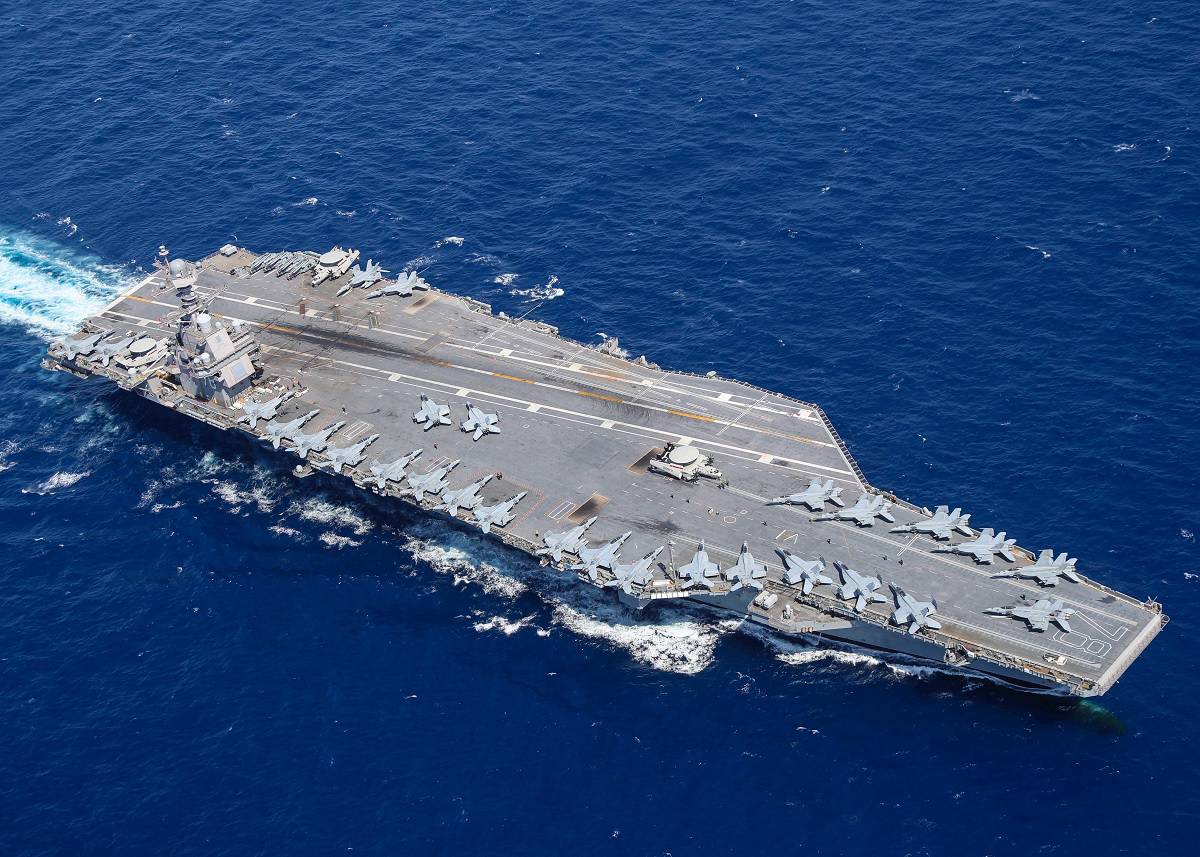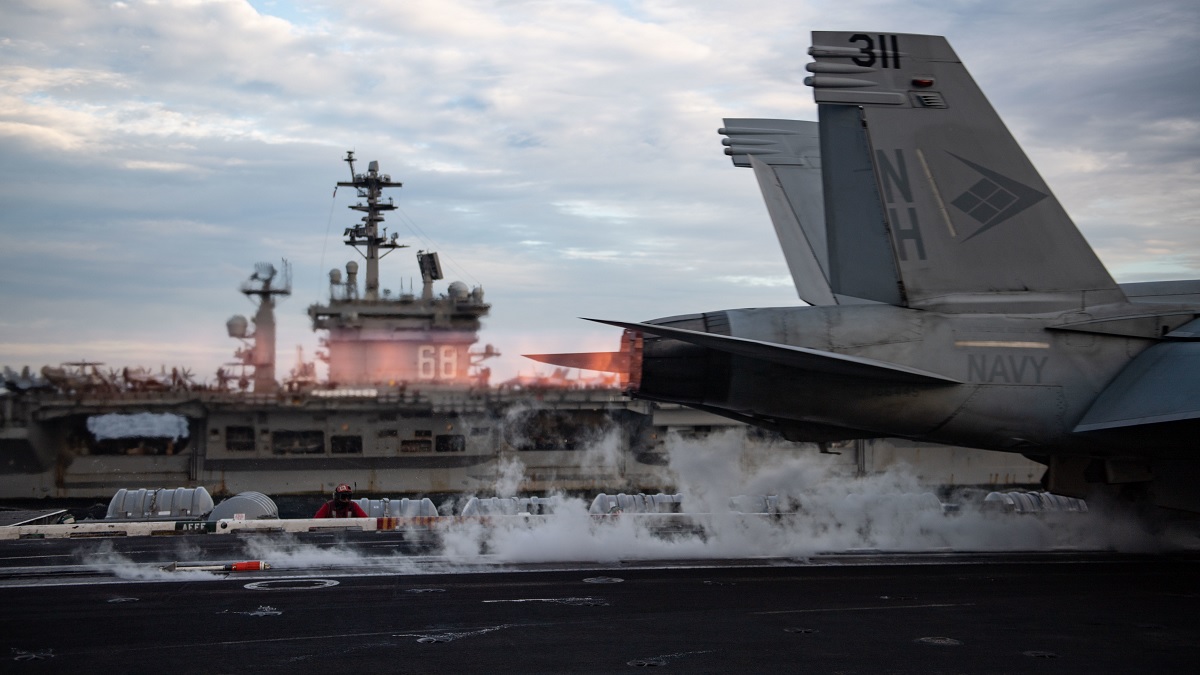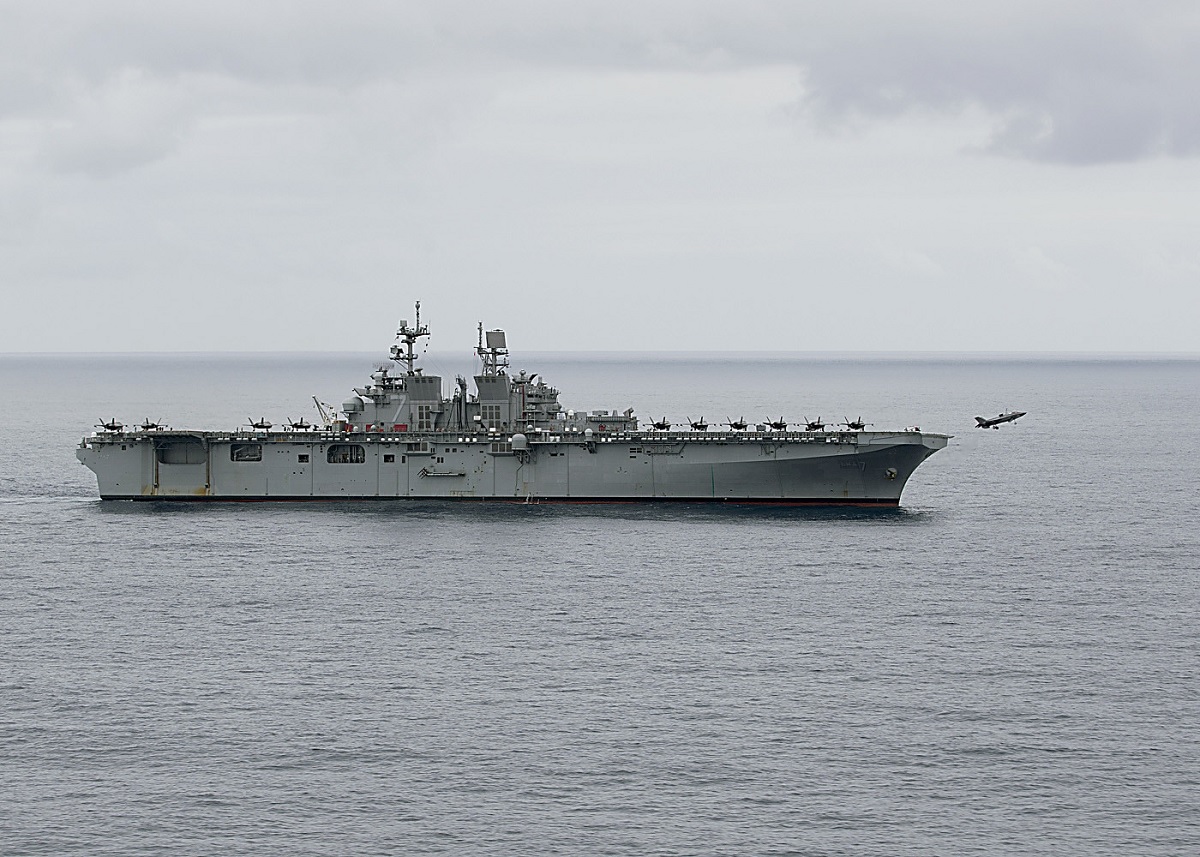The centerpiece of America’s Naval forces
Aircraft carriers are the centerpiece of America’s Naval forces – the most adaptable and survivable airfields in the world. On any given day, Sailors aboard an aircraft carrier and its air wing come to the fight trained and equipped across a full range of missions. They are ready to control the sea, conduct strikes, and maneuver across the electromagnetic spectrum and cyberspace. No other naval force fields a commensurate range and depth of combat capabilities.
US Navy fleet of 11 aircraft carriers
The US Navy has ten nuclear-powered Nimitz-class aircraft carriers:
- CVN-68: Nimitz
- CVN-69: Dwight D. Eisenhower
- CVN-70: Carl Vinson
- CVN-71: Theodore Roosevelt
- CVN-72: Abraham Lincoln
- CVN-73: George Washington
- CVN-74: John C. Stennis
- CVN-75: Harry S. Truman
- CVN-76: Ronald Reagan
- CVN-77: George H. W. Bush

With an overall length of 1,092 ft (333 m) and a full-load displacement of over 100,000 long tons (100,000 t), the Nimitz-class ships were the largest warships built and in service until USS Gerald R. Ford (CVN-78) entered the fleet in 2017 (the first sample of the next generation of aircraft carrier).
More aircraft carriers for the US Navy
Should the US Navy have to add more carriers to its fleet?
David Tussey, former US Navy A-7E Corsair II pilot, says on Quora;
‘Add 2–4 additional carrier strike groups to the current inventory, and build a new one every 4–5 years. Depending…
How to determine force structure for USN Carrier Strike Groups
‘Here’s how to determine force structure, roughly, for USN Carrier Strike Groups (CSGs). Remember, a carrier doesn’t deploy alone; it needs aircraft, escorts, support ships, shore-based assets, etc. It’s a big frickin’ mess of military power. What follows is a greatly simplified version of the real-world challenges.
1. Determine how many permanently deployed CSGs you want to have. What’s the Strategy you want to support?
For example, during the Cold War, the US policy was to always have two carriers in the Mediterranean; the newly arrived carrier in the eastern Med, and the other carrier in the western Med. Despite the demise of the Soviet Union, I think it’s likely that remains the goal as shown by the latest conflict in Gaza. So that’s two.

Additionally, the US always maintained at least one carrier in the Pacific (post Vietnam), but that grew to two carriers during the Iranian hostage situation and hasn’t reduced since — so one carrier in the western Pacific, and one in the North Arabian Sea (NAS) or Indian Ocean.
So that’s four CSGs permanently on station. As the situation with North Korea and China has heated up, there tend to be 2.5-3 CSGs in the Pacific theater and Indian Ocean/N.A.S., bringing the total CVBGs to 4.5-5 in total.
4.5-5 CSGs on station 24X7, year after year
So let’s go with that 4.5-5 CSGs on station on average, 24X7, year after year.
2. Now…to have a CSG on-station and fully deployed, you need two additional CSGs awaiting: one that is in workup (training) preparing to deploy, and a second that has just returned from deployment and is undergoing maintenance, upgrades, and shore-based training. It’s a 3:1 factor.
So…let’s use the 3X factor — now we need 13.5 to 15 Carrier Strike Groups — carriers, air wings, escorts, etc. And all the stuff that goes along with that – shipyards, home ports, Naval Air Stations, operating funds, training areas, etc. It’s a lot.
Not enough aircraft carriers
3. The US currently has 11 active aircraft carriers, not counting the LHA/LHD helicopter and STOVL carriers. So…that’s not enough, as you can tell.

(I will leave the role of an F-35B equipped LHA “America” class amphibious assault ship employed in a strike warfare mode to more informed military thinkers than myself. My guess is it could be significant. I think there are 4 LHAs with more on the way; total of 11 planned.)
The result is longer cruises, shorter turnaround times, less time for ongoing maintenance, less time for training, more wear-and-tear on the home life. Not great.
And it’s been like this for some time. And the obvious consequence of this tempo of ops is that the airplanes and ships are wearing out faster than was forecast.
4. The US Navy has long argued for 15 active duty carriers and all the airplanes and escorts to support that number. It’s a big number, budget-wise. And there just hasn’t been the support to fund that level of force since Reagan was President in the mid-80s.
5. Currently, a new carrier is scheduled to hit the fleet every 4–5 years. The new JFK is due in 2025. That rate is not a sufficient enough rate to significantly alter the current state regarding CSG deployments.
Options
Tussey continues;
‘So…what to do?
A) Do nothing. Stick with the status quo and do our best to make it work,
B) build more carrier battle groups by increasing the USN budget,
C) reduce the overall commitment of CSGs to 4, thus making the numbers (almost) work out.
‘I’d love to think that option C is the way to go. But as you can tell with recent conflicts in the Middle East + China saber rattling + North Korea with nukes…it’s a dangerous world out there, and USN carriers are in constant, high demand. So, I suspect that for now we’re stuck with option A.
Deterrence through power
Tussey concludes
‘And don’t get me wrong…deploying a carrier strike group to a conflict area is the fastest, most effective option in the US military quiver. It can be there on short notice, exert a significant “show of force” without ever firing a shot, and it can leave the area overnight should things subside. And of course, it can be a highly credible strike force should things turn hot.
‘But the mission is deterrence through power.
‘Fly Navy.’
Photo by US Navy

